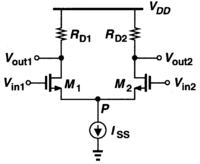alzomor
Advanced Member level 2

Hi
I am trying to switch current in load using low side switching through controlled voltage into hi precision resistor in series with the load
1st I used a pnp transistor "FMMT593" for switching the problem was hi rise and fall time at low current of 50uA
snap shoot is shown in attachment aaaaaa10.bmp
Then I used a P channel mosfet instead DMP3098L it has a very good rise and fall time but have a very hi glitch with the rise edge.
as shown in aaaaaa03.bmp
Is there any suggestions for a transistor BJT or FET with good rise and fall time and no glitches.
or guidlines to overcome these two problems.
Regards
Hossam Alzomor
I am trying to switch current in load using low side switching through controlled voltage into hi precision resistor in series with the load
1st I used a pnp transistor "FMMT593" for switching the problem was hi rise and fall time at low current of 50uA
snap shoot is shown in attachment aaaaaa10.bmp
Then I used a P channel mosfet instead DMP3098L it has a very good rise and fall time but have a very hi glitch with the rise edge.
as shown in aaaaaa03.bmp
Is there any suggestions for a transistor BJT or FET with good rise and fall time and no glitches.
or guidlines to overcome these two problems.
Regards
Hossam Alzomor




